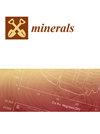页岩油生成高峰测定和二源孔演化研究的新进展
IF 2.2
4区 地球科学
Q2 GEOCHEMISTRY & GEOPHYSICS
引用次数: 0
摘要
页岩层在全球分布广泛,资源丰富,热成熟范围各不相同。然而,人们对页岩的生油高峰、成岩阶段和孔隙演化的认识仍不全面。本研究调查了中国和美国具有代表性的油气盆地中不同成熟度和有机质含量的页岩样本。采用热模拟、岩石 X 射线衍射分析、N2 和 CO2 吸附以及注汞分析等方法进行了综合表征。研究划分了页岩中碳氢化合物的生成过程,确定了石油生成阈值,确定了石油生成峰值,并根据粘土矿物和孔隙演化划分了页岩的成岩阶段。结果表明:(1) 高度成熟页岩的碳氢化合物排出和石油生成峰值出现延迟,从 Ro 值大于 0.75% 开始,到 Ro 值超过 1.2% 时达到石油生成峰值。相比之下,成熟度较低的页岩在 Ro 值为 1.1% 时开始达到石油生成峰值,从而更精确地描述了页岩的成岩演化阶段;(2)页岩的 TOC 含量越高,其碳氢化合物生成能力就越强,这表明碳氢化合物生成与 TOC 之间存在很强的正相关性;(3)页岩的成岩和孔隙演化可分为四个不同的阶段:早期成岩阶段(Ro < 0.5%),以中孔为主,孔隙体积和表面积减小;成岩中期 A 阶段(0.5%-1.1%),页岩孔隙体积增大,表面积减小;成岩中期 B 阶段(1.1%-2.0%),中孔体积先减小后增大,大孔适度增加;成岩晚期(Ro > 2.0%),有机孔隙和微裂隙增加,孔隙体积和表面积扩大。研究表明,Ro 值为 1.1% 标志着页岩的产油高峰期,发生在成岩中期的早期阶段,其特点是孔隙体积和表面积增大,这对页岩油气的富集至关重要。本文章由计算机程序翻译,如有差异,请以英文原文为准。
New Advance in the Study of Shale Oil Generation Peak Determination and Diagenetic Pore Evolution
Shale formations globally are widely distributed with abundant resources and varied thermal maturation ranges. However, the understanding of shale’s oil generation peak, diagenetic stages, and pore evolution remains incomplete. This study investigates shale samples of varying maturities and organic matter content from representative oil and gas basins in China and the United States. Comprehensive characterization was conducted using thermal simulation, rock X-ray diffraction analysis, N2 and CO2 adsorption, and mercury injection analysis. The study delineates the hydrocarbon generation process in shale, identifies the oil generation threshold, determines the peak oil generation, and categorizes shale’s diagenetic stages based on clay minerals and pore evolution. The results indicate: (1) highly mature shale exhibits delayed hydrocarbon expulsion and peak oil generation, starting at Ro values greater than 0.75% and reaching peak oil generation at Ro levels surpassing 1.2%. In contrast, peak oil generation in less mature shale initiates at Ro values of 1.1%, providing a more precise depiction of the shale’s diagenetic evolution stages; (2) the higher the TOC content of shale, the greater its hydrocarbon generation capacity, showing a robust positive correlation between hydrocarbon generation and TOC; (3) the diagenesis and pore evolution of shale can be categorized into four distinct stages: the early diagenesis stage (Ro < 0.5%), dominated by mesopores, and with reduced pore volume and surface area; the middle diagenesis stage A (0.5%–1.1%), where shale pore volume has been enhanced while the surface area has been reduced; the middle diagenesis stage B (1.1%–2.0%), where an initial decrease followed by an increase in mesopore volume occurs, along with a modest increase in macropores; and the late diagenesis stage (Ro > 2.0%), with increased organic pores and microfractures, while both pore volume and surface area expand. The study suggests that a Ro of 1.1% marks the peak oil generation period for shale, occurring during the early stage of middle diagenesis, characterized by larger pore volume and surface area, crucial for shale oil and gas enrichment.
求助全文
通过发布文献求助,成功后即可免费获取论文全文。
去求助
来源期刊

Minerals
MINERALOGY-MINING & MINERAL PROCESSING
CiteScore
4.10
自引率
20.00%
发文量
1351
审稿时长
19.04 days
期刊介绍:
Minerals (ISSN 2075-163X) is an international open access journal that covers the broad field of mineralogy, economic mineral resources, mineral exploration, innovative mining techniques and advances in mineral processing. It publishes reviews, regular research papers and short notes. Our aim is to encourage scientists to publish their experimental and theoretical results in as much detail as possible. There is no restriction on the length of the papers. The full experimental details must be provided so that the results can be reproduced.
 求助内容:
求助内容: 应助结果提醒方式:
应助结果提醒方式:


